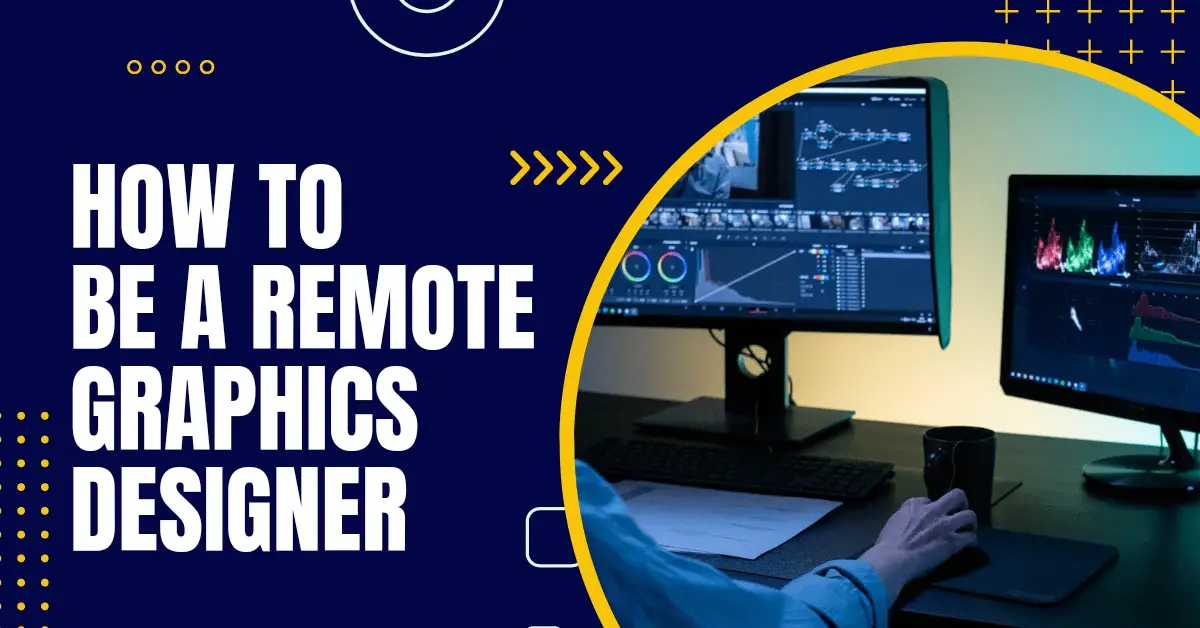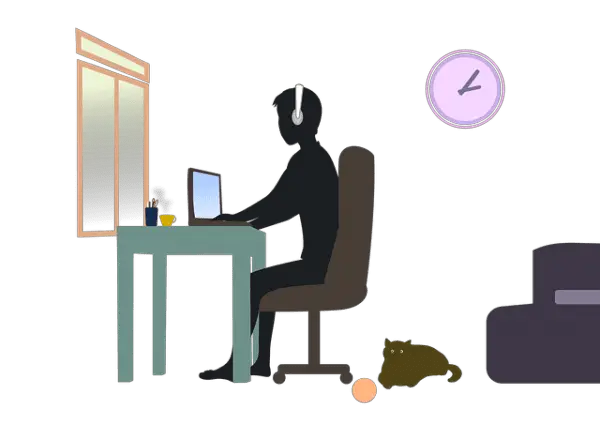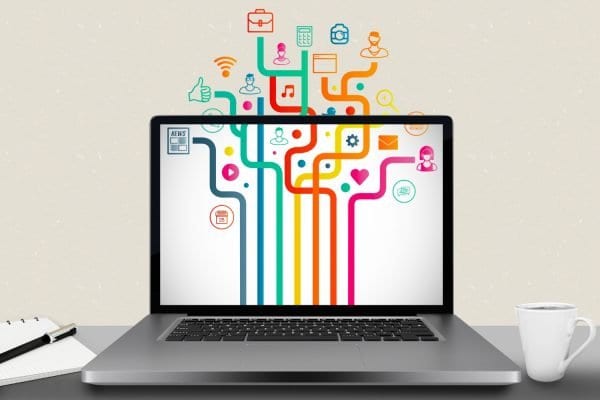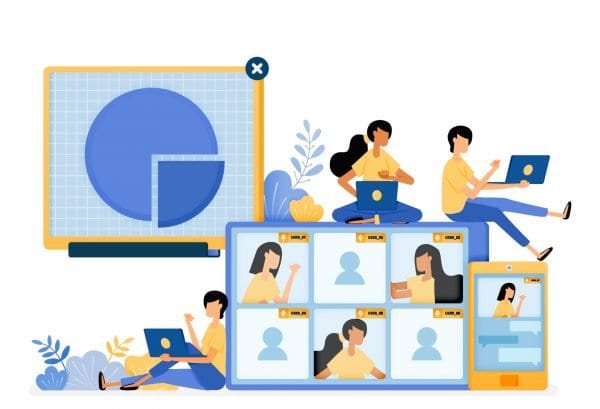Learning how to become a remote graphics designer and start working remotely can be the next best thing for you at the moment. The skill of a graphic designer continues to be in high demand thanks to the covid 19 pandemic of 2020 and the increase in science and technology. In this digital age of content and online businesses, more companies and organizations are in demand for graphics designers. According to Statista, the graphic design industry will increase in revenue to $11.3 billion by 2024. Furthermore, graphics design is a career path that supports work flexibility and allows people to work remotely.
If you want to do graphic design remotely, keep reading, we have everything you need to know to get started.
Who is Graphics Design?
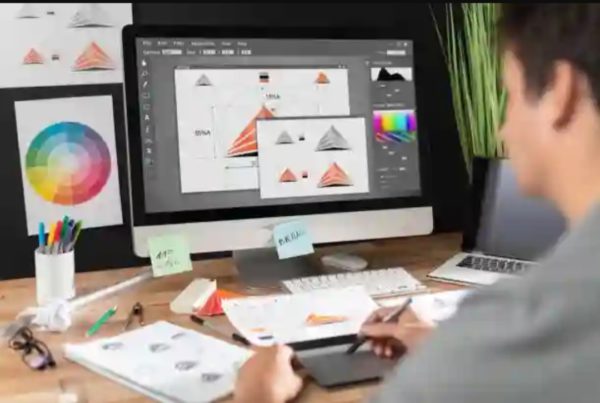
A Graphic designer is a professional that makes use of graphics to communicate visually with people or a specific type of audience. They are educated and skilled in using images, colours, fonts, and text to communicate a message. A remote graphics designer creates posters, ads in a magazine, website design, a business logo, social media graphics, postcards or email marketing templates to communicate or appeal to an audience. They use these designs to educate, inform, inspire, or entertain, depending on the needs of the client.
Not all graphics designer is expected to have a degree in fine arts or pure and applied arts. However, some more technical areas or roles of graphics design might require you to have a degree. As a graphics designer, you must demonstrate graphic design skills in a portfolio to attract employers and recruiters. Common software skills include Adobe Photoshop and Illustrator, InDesign and Canva.
Before the age of the Internet, graphic designers often work with traditional media companies to create designs such as billboards, print media, and graphics for newspapers, magazines and tv advertising. Today, the skillset of a graphics designer is now being extended to include social media, email marketing, blog post graphics, and a lot more. This has created a lot of demand for graphics designers by a lot of companies including digital marketing agencies, business organisations, companies and other related organisations.
Steps to Becoming a Remote Graphics Designer
1. Through a University Degree

While a university degree is not necessary to become a remote graphics designer, having one will give you an added advantage and knowledge. Most degrees that are related to graphics design include Fine arts, Pure and Apply Arts and Architecture. There are some schools in the United States and the United Kingdom that now offer graphics designing as a degree. Getting a college degree as a graphic designer will help you learn how to use graphic design computer technology and software, understand advanced art techniques, help you stand out when applying for jobs and provide you with accreditation of graduating from a design program.
2. Online Courses and Certification
Online programs, courses and certifications can provide you with graphic design skills, knowledge and certification upon completing the program. There are a lot of online programs available on the Internet that people who are interested in learning graphics design can take. Udacity, Udemy, Coursera, LinkedIn, and Alyson among others are online platforms that users can go to learn about graphics design. Furthermore, you can follow some graphics designer expert’s channels on Youtube like Daniel Walter and watch full free courses.
Courses to Take Include
- Studio art
- Introduction to Adobe Photoshop and illustrator
- Introduction to graphics design
- Introduction to Canva
- Advance Photoshop and Illustrator
- Web design
- Product design
- Principles of design,
3. Apply for Internships

Internships are a way for people to gain relevant industry experience and entry-level positions as a graphic designer. With an internship in graphics design, you can gain exposure to the graphic design profession and get work experience and portfolio pieces before applying for jobs. A graphic design internship can range from 3 to 9 months to a year. When applying for graphic design internships, look for opportunities that will offer you hands-on experience with client work.
4. Build a Creative Portfolio
During your entry-level or internship, you need to start building your portfolio and showcasing your best work. Showcasing your talent and skill will help you attract employers and recruiters when you are looking for jobs as a graphics designer. This way, recruiters and employers can gauge your work and expertise. It’s important to present only your best work and tailor your portfolio to a potential employer. Registering on a digital portfolio or online portfolio website like Linkedin Fiverr, Upwork and glass door is a great method for showcasing different types of work.
5. Stay up To Date with Current Trends
In the tech industry, keeping up to date with the current event will help you know the latest trends and software people use to get their work done. The graphic design industry is a dynamic and evolving industry with new developments happening often. This is why it is important to stay up-to-date with various parts of the industry to remain relevant. Learn and master new skills, and update yourself with various design software and tools. Take online courses and certifications to get relevant skills and recognition. Join online communities and forums to connect and network with other graphic designers. Register on platforms like LinkedIn to connect with industry experts.
Remote Graphics Designer Career Path
Once you acquire graphic design technical skills through education, online courses and internship you can land multiple job opportunities from the comfort of your own home. Here is a list of the best graphic design remote jobs.
1. User Experience Designer
A user experience designer(UX) is responsible for creating a positive experience for people as they interact with digital products. They optimize applications to improve user experience. They achieve this by conducting user research, prototypes, and usability testing. UX designers work for advertising agencies, financial institutions, and software companies.
2. Product Designer
A product designer is responsible for the product creation process. They take part in user research, prototyping, visualization, and communication. They are also referred to as information architects or interaction designers. They have extensive knowledge and experience about product design experience and contribute to the overall success of the companies.
3. Visual or website Designers
Visuals or website designers are responsible for creating a company’s website, mobile device, app, and games through a combination of visual skills. They rely on brand guidelines to develop website layouts. They design company logos, infographics and other visual elements on the website. Visual or website Designers earn an average salary of $48,283 and an average remote salary of $73,322 per year.
4. 3D Motion Artist
A 3D motion artist is a professional that creates visual artwork for websites, TVs, and mobile apps. This could include movie clips, trailers, commercials, title sequences, etc. They make use of visual effects, animation and other cinematic techniques to bring life to their creations. Most 3D motion artists work in software companies and advertising agencies. The average salary of a remote 3D motion artist is about $76,358 per annum.
5. Digital Illustrator
A digital illustration is a professional that creates images using software instead of paint or canvas. A digital illustrator creates original artwork to help sell films, video games, advertisements, and other products. Basically, a digital illustrator use software to create images that tell a story, and then those images are used to help sell a product. Digital illustrations are made using software such as Adobe Photoshop and illustrator.
The average annual salary for a digital illustrator in the United States is $68,813 according to Zip Recruiter.
6. Graphic Designer
As a graphics designer, you would often work with graphics, images and text to communicate ideas to customers and audiences. Graphics designers create graphics or layouts for websites and create logos, infographics, posters, and billboards for companies and organisations. Furthermore, they might be required to create graphics for social media, emails, articles, blog posts and YouTube video covers. You also design graphics for social media ads and Google ads. These graphics are used to sell to customers. Common software skills include Adobe Photoshop and Illustrator, Piktochart, Canva, etc.
Android Developer Career Path
Skills to Have as A Remote Graphics Designer
To be a successful graphics designer there are some important skills you need to have to make your work stand out from that of the competition. You should be creative and have a good understanding of styles and the overall layout. Furthermore, you need to have a deep understanding of composition, typography, colour theory, and graphic design principles. Graphics designers should also be able to use a variety of computer software packages, including design software, photo editing software, and layout software. The major skills you need to have include
1. Design Fundamentals Skills
A remote graphics designer must understand how to use lines, colours, textures, shapes, values, and white space and apply them to most graphic design projects.
2. Typography Skills
As a remote graphic designer, you must be able to arrange words and letters in a visually appealing way. Typography is the art of choosing a typeface, colour palette, size, length and layout. The combination of these factors can evoke an emotional response in the reader, one that boosts credibility and trust in the content itself. They are types of fonts and styles used in the design.
3. Color Theory
A remote graphics designers should have an extensive knowledge of the use of colour, how it impacts cultural or psychological levels and the effects of colour interactions. You should also have an understanding of colour design in print, web multimedia and handheld devices.
4. Collaboration Skills
To work as a remote graphics designer, you need to have good collaboration skills to make it easy to work with others in pursuit of a common goal. As a remote graphics designer, you might need to work with other individuals like social media managers, content creators, marketing managers and other relevant employees. You should be able to listen to others and communicate consistently.
5. Communication Skills
One basic skill for working remotely is having an effective communication skill to communicate effectively with your employers, clients and colleagues. Potential employers are always looking for graphic designers who have strong communication skills that can express their ideas clearly and consistently.
6. Creative Skills
Designs have to do with creativity, unique styling and the ability to generate new ideas and use them to solve problems or communicate with others. Successful graphic designers are people that can deliver unique branding to their designs to make them stand out from competitors.
7. Storytelling
In digital marketing, storytelling is one of the most engaging forms of content because it appeals to the emotions of your audience. Graphics is a way users can use to appeal to their audience or customers. This is why most social media platforms like Instagram and Facebook have space for stories. Storytelling skills are especially helpful for visual designers charged with building consistent brand images.
Remote Virtual Assistant Career Path: Everything You Need to Know
Tools Used by A Remote Graphics Designer
Software for Designing Graphics
1. Adobe Photoshop
It is a photo editing tool used by graphics designers for manipulating digital photos and photorealistic computer art. Photoshop offers:
- 2D image manipulation
- 3D image manipulation
- Compositing
- Video editing
- Image analysis
2. Adobe Illustrator
Adobe Illustrator is used for drawings, designing logos, photo illustrations, styling and much more. Most remote graphics designers love this tool because of its ease in adjusting the layers and artboards. With Adobe Illustrator, users can create
- Graphics
- Logos
- Cartoons
- Fonts
3. Adobe InDesign
Adobe InDesign is the industry-leading layout and page design software for print and digital media. It is used to create beautiful graphic designs, digital magazines, eBooks, and interactive online documents that draw people in with audio, video, slideshows, and animations. InDesign makes it easy to manage your design elements and quickly deliver immersive experiences in any format.
With Adobe InDesign, you can create
- Animation
- Slides how
- Digital magazines
- Ebooks
4. Piktochart
Picktochart is a software that is used by graphics designers to create infographics, social media posts, videos and illustration
Picktochart can be used to create
- Infographics
- Logo
- Social media graphics
5. Canva
Canva is an Australian graphic design platform, used to create social media graphics, presentations, posters, documents and other visual content. With Canva pro you have access to a lot of unlimited images, you can manipulate photos and remove watermark.
With Canva you can design;
- Logos
- Social media graphics
- Presentation
- Posters
- Image resizing
- Others are postermywall
- Hardware tools
6. Computer
A graphic designer must have a sophisticated or high-tech computer or laptop to perform all the heavy lifting in the profession. Examples of computers you can use include
- The Macbook Pro with touch bar and a touch ID.
This software is considered overkill by any standard. It comes with a 27-inch 5K Retina Display, 32-GB memory, a 16-GB graphics card, and an 18-core processor for the high-end variant. Futhermore, a 3.1GHz processor and 256GB storage for speed and storage.
- iPad Pro + Apple Pencil
This device comes with a stereo sound and quad speakers that are notably superior to non-pro iPads. It comes with a 3.9GHz Processor and a 512GB storage capacity with a couple hours more battery life and an upgraded from entry level iPad, cameras that shoot 4K video
7 Smartphone
Some smartphones can help make your work easier as a graphics designer. Apart from using them to connect with various communities, employees and clients. It also hosts various graphics design apps like Canva, photoshop, Picktochart and other handy on-the-go drawing and image-editing tools. You can also use them to take quality pictures.
Examples of phones to use include
- IPhone
- Samsung galaxy S flashship series
8. Software for Stock Images
Stock images can also be used by social media graphics designers for social media posts, blogs and article posts. Some are free and paid. Examples include
- Freepik
- Pixabay
- Unsplash
- Pixels
- Istockphotos
- Shutterstock
9. Other Graphics Designer Tools Include
- Pen and paper
- Good mouse and keyboard
- A comfortable chair
- The right environment
- Smart notebooks
- Graphics tablets
- Zoom( for video conference and calls)
- Trello( Team collaboration and management)
- Slack( Team collaboration and management)
- Dropbox and Google drive for storage
Conclusion
Now that you have learned some of the things you need to get started with a career as a remote graphics designer you can start looking for jobs on websites like Fiverr, LinkedIn glassdoor, or Upwork. A remote graphics designer job is a very lucrative work and very flexible which gives you enough time for other things like travelling and dinner. So if you are looking forward to being a graphics designer before the year runs out this is the right article for you.

